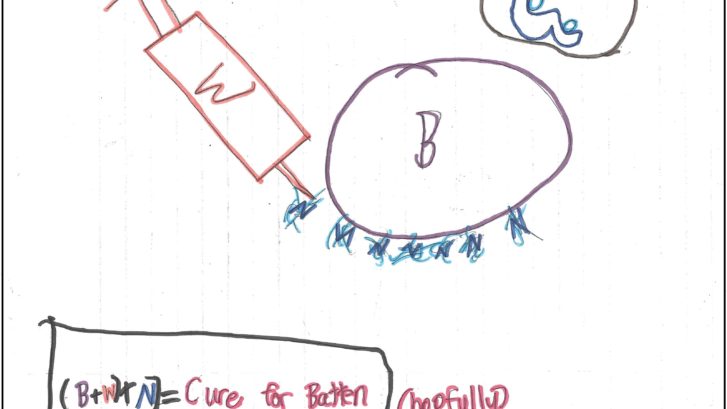Top Research Collaborations Explain How They Are Speeding the Path to Cures
By FasterCures
Published October 8, 2014
WASHINGTON, DC–(Marketwired – Oct 8, 2014) – Thirty of the most creative, cross-sector collaborations in medical research will present their models to potential partners and funders at FasterCures’ sixth annual Partnering for Cures meeting, November 16-18 in New York City. Selected through a competitive proposal process, these partnerships are aimed at reducing the time and cost of getting new medical solutions from discovery to patients.
“The quality of our over 120 applicants — more than twice the submissions of previous years — was terrific and made for a particularly difficult decision-making process,” said FasterCures’ Executive Director Margaret Anderson. “These collaborations address some of the thorniest issues in medical research using models that can be scaled and translated across diseases and sectors.”
From re-imagining clinical trial infrastructure to improving and expanding data sharing to creating the tools and resources needed to translate basic science into cures, these innovators are accelerating the path from lab to market for novel — and needed — therapies.
For example, 2014 presenters include:
- The first-ever public-private partnership focused on advancing the regulatory science of medical devices
- An effort that harnesses the power of high-performance computing to “hack” brain disease
- One of the first clinical trials to address coverage with evidence development
- A collaboration that blazes a trail for successful reimbursement of disruptive technologies
- An outcome assessments consortium that identified and validated a new measure of disability for use as a primary endpoint in multiple sclerosis trials
- And many more…
With nearly one-third of the 120 applicants indicating that their collaborations were either established or enhanced as the result of participating in past Partnering for Cures, the meeting remains a key venue for innovators across the ecosystem to unite and share ideas.
We invite you to attend these presentations and glimpse the future of medical R&D. By engaging patients as trusted partners in the drug development process and by working together — across labs, companies, borders and sectors — these partnerships provide a shining example of transformation in action.
Contact Cecilia Arradaza (carradaza@fastercures.org) for a complimentary media registration code and join us in NYC.
2014 Innovator Presentations at Partnering for Cures
1. Addario Lung Cancer Medical Institute: Remote clinical trials – The genomics of young lung cancer study
2. ALD Connect
3. Alzheimer’s Association: Amyloid Imaging Coverage with Evidence Development Workgroup
4. Boston Biomedical Innovation Center: NIH Centers for Accelerated Innovation
5. Brave Bosom: Free the Data
6. Catalent Institute: Non-invasive Macromolecule Delivery Consortium
7. Christopher & Dana Reeve Foundation: The Big Idea
8. CureDuchenne: Accelerating Access to Treatments of Duchenne Muscular Dystrophy
9. Focused Ultrasound Foundation: Blazing a trail for successful reimbursement of disruptive technologies
10. Foundation for the National Institutes of Health: THE MAL-ED NETWORK – Sharing data and resources to gain a better understanding of child growth and development
11. Give To Cure
12. Hearing Health Foundation and Oregon Health & Science University: The Hearing Restoration Project
13. HemoShear and Children’s National Health System: Rare Disease Drug Accelerator – A new paradigm to accelerate drug discovery for the treatment of rare diseases
14. Human Vaccines Project
15. Indiana Clinical and Translational Science Institute: Strategic Pharma-Academic Research Consortium (SPARC) for Translational Medicine
16. IO Informatics: ASK for PROOF (Applied Semantic Knowledgebases for Prevention of Organ Failure)
17. Johns Hopkins University: The Neurofibromatosis Therapeutic Acceleration Program
18. Locemia Solutions, T1D Exchange, and The Helmsley Charitable Trust: Partnership for development of Dry-Mist Nasal Glucagon
19. Mayo Clinic: Partnership for development of novel treatments for heart valve disease
20. Medical Device Innovation Consortium
21. Medical Research Council Technology: MRCT Dementia Consortium – New models to accelerate novel medicines to patients
22. National Multiple Sclerosis Society: Multiple Sclerosis Outcome Assessments Consortium (MSOAC)
23. The New York Stem Cell Foundation and Beyond Batten Disease Foundation: Multi-stakeholder collaboration to discover cures for juvenile Batten disease
24. The Ontario Brain Institute: An integrated system of partnerships
25. Orion Bionetworks: Hacking brain disease for a cure
26. Patient-Centered Outcomes Research Institute: Engaging patients as partners to create PCORnet
27. Seattle Children’s Research Institute: Alliance for Children’s Therapeutics
28. Solve ME/CFS Initiative: How to build your evidence base
29. Structural Genomics Consortium and CHDI: Open access partnership for Huntington’s Disease research
30. University of California, San Francisco Clinical and Translational Science Institute and Quest: Dementia Program
About FasterCures
FasterCures, a center of the Milken Institute, is an action tank determined to remove barriers to medical progress. We have only one goal: to save lives by speeding up and improving the medical research system. (www.fastercures.org)



